The Complete Used Car Checklist (With Printable PDF)
Table of Contents
Viewing and test driving a car can be very daunting, particularly if you’re not mechanically minded. So how do you know what to look for when buying a used car?
Thankfully we’ve put together a comprehensive and printable used car inspection checklist for you to follow. By following our guidance, you’ll be in a much better position to spot possible issues, and get the best deal when buying a second hand car.
Used Car Buying Research
Before viewing a used car, you’ll need to do some research so that you know what to look out for on the day.
Common issues
It’s important to uncover common issues that the car you’re looking to buy may suffer from. Find owners forums online; they’re a goldmine of information. Current owners are best placed to advise what may go wrong, and how costly it may be if they do.
You may not even need to ask the question yourself, as it’s likely many people before you have had the same concerns. Just browse the threads, and make a note of any common issues you come across.
Reviews
Look up online reviews and videos of the car you’re looking to purchase. This will give you a greater breadth of knowledge, and it will again help you identify anything that you may want to check when viewing the car yourself.
Check prices
Value for money is always an important factor when purchasing a used car. Look up prices of similar cars and get a feel for the market.
Take into consideration whether the sales are from private or trade sellers, as trade sales will generally command a higher price tag.
Costs
Before viewing a used car, you’ll want a rough idea of how much it’s going to cost you to run.
Service intervals and costs, general maintenance, spare parts, and insurance costs all add up in the long-run, so get a rough idea of these before viewing. The owners forums and online reviews can help you again here.
Fuel efficiency is another important cost, particularly if you’re going to be putting a lot of miles on the clock.
Planning for a used car viewing
There are various factors you need to consider when planning to view and test drive a used car.
When and where
If you’re buying from a dealer then this is fairly straightforward. However, if you’re buying from a private seller it becomes trickier.
You should always try and view the car at the home of the seller. There are three reasons for this:
- You’re less likely to be scammed than if you met in a public place
- So you can check the paperwork matches the owner’s address
- So you can check where the car has been kept, and whether there are any obvious leaks where it has been parked
Also, always arrange the visit during daylight hours. Darkness can hide a number of issues, including bodywork damage.
Budgeting for a used car
Based on the online research you’ve done, come up with an idea of how much you think the car is worth and what you’re willing to pay.
This may differ slightly once you’ve viewed the car, but it’s good to go in with a ballpark figure in your mind.
Questions to ask
There will be plenty of time to ask questions when you’re viewing the car, but it’s a good idea to ask some initial questions before arranging the viewing to ensure you’re not wasting your time.
- Has the car ever been in an accident?
- Are you the registered keeper?
- Will I be able to take it on a test drive?
If the answer to question 1 is yes, you’ll need to consider whether you’d be happy to buy a car that has previously had potentially serious repairs. If the repairs weren’t carried out well, it could mean the car is dangerous to drive.
If the answer to questions 2 or 3 is no, you’ll need to consider why not. There may be a good reason, but the seller could be trying to hide something from you.
What to check when viewing a used car
We’ve included all of the main points in a handy PDF document for you to download here. You can take this with you to view the car, and check things off as you go.
But here are the details on what you’ll need to check:
Exterior
Bodywork
Walk around the car scanning for any defects in the bodywork. Crouch at each corner and look along the lines of the car; are there any dents, chips or ripples?
If you do spot rippling in any of the panels, you can use the magnet test (video below) to check if it’s been repaired and filled before.
Also check for any unusually large gaps between panels. This is another sign that the car may have been in an accident and had a bad repair job.
Rust can be a huge issue, and one you’ll need to look out for. It’s any motorist’s worst nightmare, with good reason. Check in the following places:
- Under the doors and inside the door frames
- In the wheel wells and around the arches
- Around the windshield and window seals
- Open the trunk and check the hinges, and under the carpet
Rust doesn’t mean you should automatically walk away, as it can be repaired if caught early enough. If it is rife, though, it will end up costing you a significant amount to put right. Worse still, it could make the car unsafe to drive.
Glass
Check the windshield and windows for signs of chips or cracks. Over time, chips can develop into cracks if they’re not filled. If this happens, you may have to pay for replacement glass which can be very costly.
Tires
Check how much tread is left on each tire. If there’s not much left, it won’t be long before you have to replace the tires. You can use the penny method if you’re in the USA, or the 20p method if you’re in the UK.
Tires should wear evenly from one sidewall to the other, so inspect the full width. If any tires are wearing unevenly, the car’s alignment may be out. This isn’t too expensive to fix, but could be a sign of a bigger issue.
Each of the tires should be the same brand, preferably a well known brand. This is a good indicator that the previous owner hasn’t skimped on maintenance due to costs. Be sure to check the spare as well, if it has one.
Lights
Check the lights for any signs of damage, including chips and cracks. We’ll check whether they’re operating later on.
Suspension
Take a few steps back from the car and walk around it. Check that it’s sitting level.
Push down on each corner to check the shock absorbers. It should only bounce once.
Grab each tire one at a time, and pull it towards you. If you hear a clunking noise, it could be the wheel bearing or suspension joints on the way out.
Interior
Upholstery
Look out for any tears, stains, and general wear. If it’s an older car, then it’s likely the driver’s seat will have an element of wear, but anything more serious could end up costing a fair amount to fix.
Smell
What does it smell like inside? Pungent smells such as smoke or pets can be very tough to get rid of, so will you be happy driving the car if that’s not possible?
If it smells damp, you may have a bigger problem. Water could be leaking into the cabin, often from the window seals or sunroof. This can cause a whole host of issues, including rust. Take a look under the mats to check.
Electrics
Turn the key in the ignition, but don’t switch the engine on yet. Test all the buttons and switches, including the windows, radio, electric mirrors and air conditioning.
Electrical problems can be very costly to diagnose and fix, so this is an important one.
Headliner
The headliner is the fabric secured to the roof frame. Over time, this fabric can become loose and detach itself from the lining.
If the headliner is starting to sag in the car you’re viewing, it’s likely it will only get worse from here. Replacing it can be costly, and it’s one that will need to be done sooner or later as it will get in the way.
Engine bay
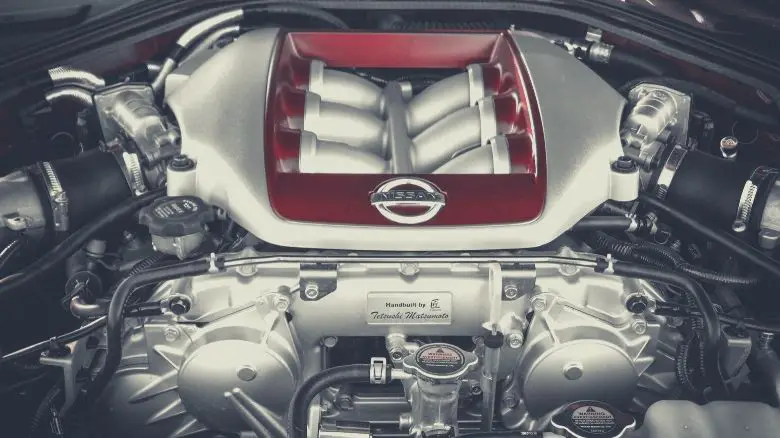
Overall condition
Is it clean and does it look like it’s been well maintained? Check for signs of rust, particularly at the corners where the windshield is attached.
Fluids
Use the dipstick to check the oil level and color. It should be a dark brown color. If it’s lighter in color, it’s likely to have just been changed. If the oil is gritty, it could be a sign of an issue waiting to happen.
Check the oil filler cap for signs of a mayonnaise-like substance. This could indicate the head gasket is on the way out; a costly fix.
Power steering and brake fluids should be between the minimum and maximum markers.
Belts & hoses
Examine the drive belts and run your hand over them to check they’re not damaged in any way.
Feel the hoses leading to the radiator and other areas to ensure the rubber isn’t solid. Any white staining is a sign of possible problems in the future.
Radiator
Modern cars have a sealed cooling system, so they shouldn’t need to be topped up with coolant. Check the level in the reservoir is between the min & max markers.
If the engine is cold, open the cap and take a look at the color of the coolant. It comes in a variety of colors, including blue, green, and red, but make sure it looks clean. It shouldn’t be rusty or milky colored.
Battery
Check the area around the battery terminals for rust (some are located in the trunk).
You can also check the battery’s charge if you bring a multimeter with you. Fully charged car batteries should be at 12.6 volts or above. Multimeters are very cheap to buy, and can help you spot any potential issues with the alternator… which you definitely don’t want!
Underneath the car
Components
Use your flashlight to check all components for signs of damage, rust, or welding. Ask the seller for further information on the welded areas if any are present; you’ll need as much information on past repairs as possible.
Leaks
Check the floor where the car is parked for any signs of leaks. If the seller doesn’t know what’s leaking, you could end up paying for the cost of finding the leak, as well as any parts and labor required to fix it.
Tailpipe
At the back of the car, examine the tailpipe for signs of rust. Also feel the pipe (if it hasn’t been driven recently) for residue. This could be a sign that the car is burning oil.
Bumpers & rocker panels (sills)
Move around to the front of the vehicle and check underneath for signs of damage. Cars with low ground clearance are often damaged in this area, after years of being scraped on low kerbs and speed bumps.
A similar check can be made on the rocker panels (sills).
What to check when test driving a used car
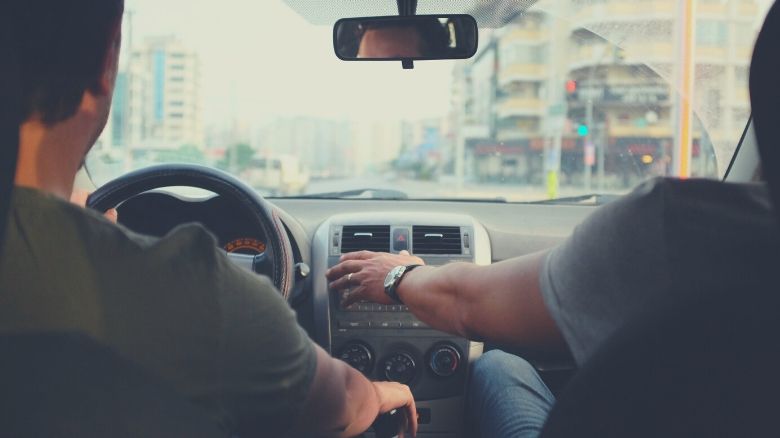
Temperature gauge
Turn the key in the ignition, but don’t start the car yet. Is the temperature gauge showing that the car has been warmed beforehand? If so, the seller could have purposely warmed it up to try and hide something.
If the engine is cold, check that it starts well. Leave it running for a while to test if it comes up to temperature nicely. The gauge should rise to the midpoint and stay there. If it keeps going and the car starts overheating, there is a serious issue.
Once the engine is warm, switch it off and start it again to ensure the car starts well when warm.
Clutch
Once you get out on the road, check the clutch for signs of wear. This is one of the most essential parts, and is likely to be very costly if it needs replacing.
Pay attention to any unusual noises, smells or slippage. It should also pull away cleanly every time, not judder.
Transmission
The gears should all select cleanly with no crunching or grinding noises. If you’re testing a manual car, the gear stick should center itself in neutral.
If you’re testing an automatic car, ensure all the changes are smooth and there’s no delay in gear engagement.
Steering
If the car you’re testing has power steering, it should be easy to operate and not feel too heavy. Also listen out for any unusual noises whilst steering.
You will need to ensure the car is tracking correctly. Note whether there are any vibrations through the wheel as you’re driving, and whether the steering wheel sits off center when driving straight.
If it’s safe to do so (perhaps in a quiet car park), take your hands away from the wheel as you’re moving to see whether the car pulls to one side.
Brakes
When it’s safe to do so, test the brakes by pushing hard on the brake pedal. Note whether there are any vibrations, grinding noises, and whether the car pulls to one side.
Are the brakes responsive, or does the pedal sink to the floor? If it’s the latter, there could be a leak in the braking system.
Park on a slope and engage the handbrake whilst in neutral. The car should remain in place if the handbrake is in good condition.
Engine
Is the engine running smoothly, or is it sounding rough? Be sure to turn the radio off and close the windows when driving so that you can focus on the engine noise.
Note any unusual sounds coming from the engine, and investigate further if necessary. You can also park up safely and pop the hood open to listen out for anything amiss.
Your overall satisfaction
Are you happy with the way the car drives in general? Does it provide the performance you expected, and is it comfortable enough for you? Did anything irritate you, or would you be happy doing long journeys?
Questions to ask when buying a used car
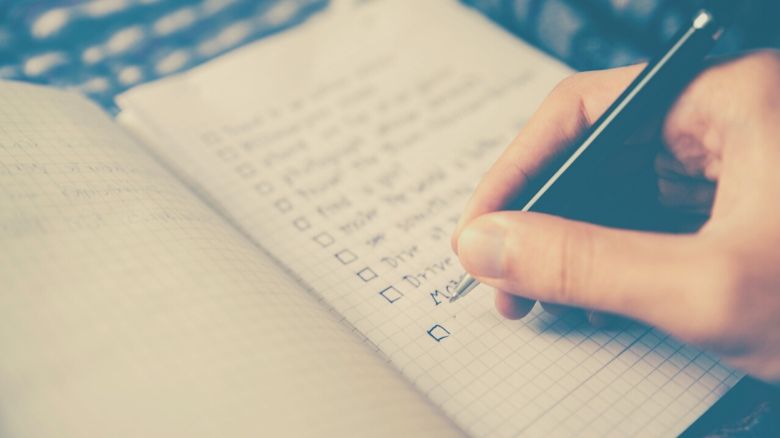
It’s important to ask the right questions of the seller when buying a used car. Here are some basic questions that will help you in your purchasing decision.
Why are you selling the car?
This is a great question to test the seller’s response. Is it just that they’ve owned the car for a long time and are looking for something new, or are they looking to offload a problematic vehicle?
How many previous owners has it had?
Generally, the lower the better. If the car has had a large number of previous owners, it could again suggest that it has caused issues for people in the past.
Can I see the paperwork?
Looking through a used car’s paperwork can give you vital clues as to how well the previous owners maintained the vehicle. You should look out for proof of service history (service intervals can be researched online or found in the car’s handbook) and invoices for any work carried out.
Check the VIN specified in the documentation matches the number stamped on the car’s chassis. There are plenty of online services that allow you to check the history of the vehicle using the VIN.
These services also identify reports of damage and protect you against buying a stolen car.
Where has the vehicle been kept?
In an ideal world, the car will have been kept in a garage whilst not in use to protect it from the elements. It’s not the end of the world if this isn’t the case, but if it’s been kept on a busy road there may be more chance of paintwork damage than if it’s been kept on a driveway.
You can also ask to examine the area where the vehicle has been kept for any signs of residue that may have leaked from the car.
Has it been damaged in the past?
Sellers often try and hide previous accident damage, so it’s good to catch them off-guard with this question. Of course, if it’s a dishonest seller they may not tell you the truth, so be sure to do the bodywork tests mentioned earlier in this article for peace of mind.
Have there been any modifications?
Some people like to add their own personal touches to their vehicles, which is fine whilst it’s under their ownership. However, their taste may not match yours, so you’ll need to check you’re happy with any modifications that have been made, or you’ll end up with the additional cost of reversing the changes.
Are there any issues that weren’t mentioned in the description?
An honest seller should always include any issues in the description, but often adverts don’t provide enough space to do so. Asking this question ensures that you’re fully informed before making your purchasing decision.
Getting the best deal on a used car
There are often multiple cars on the market at varying prices, so how do you ensure you’re getting the best deal on the car you’ve chosen?
Come prepared
You’ll have done your research before viewing the car, so ensure you have a good understanding of what you think it’s worth in comparison to other similar vehicles. Come with a budget in mind.
Make a note of all the issues you come across as you’re looking at the car, and once you’ve test driven it. Take the seller through each of the issues and use them as a negotiating point to drive the price down.
Be prepared to walk away
If you’re making an offer, start lower than your maximum budget. It’s likely the seller will make a counter offer.
You may have your heart set on the vehicle you’re viewing, but if the seller isn’t willing to meet your valuation then be prepared to walk away.
There will be more on the market, and the seller may well get back in contact at a later stage to renegotiate.
Can any extras be thrown in?
Small extras can add up. You could ask the seller to fill the fuel tank before taking it off their hands, for example. They may be willing to do this if it gets the deal over the line.
If you’re buying from a dealer, you could ask for the car to be serviced before you buy it. You may also want them to provide a warranty.
Be prepared to put down a deposit
If you’ve viewing a car but aren’t able to drive it away the same day, be prepared to put down a deposit.
Sellers often come across ‘tire-kickers’ and will be unwilling to take the car off the market on your word alone. You have a much better chance of reserving the car if you can offer them a deposit on the day.
A bank transfer is better than cash as there’s an electronic trail, and always ask the seller for a receipt. Particularly if you’re buying privately.
Be vigilant
Be aware of common tricks that car sellers pull, and don’t give in to high-pressure tactics.
Most of all, stay safe. There are a lot of scammers out there and if something doesn’t feel right, walk away.
Trust your instincts
Gut feeling is critical in any car purchase, and if something seems too good to be true, it often is.
Don’t hesitate to take a few days to think about whether you want to make an offer, even if you really liked the car you just viewed.
In conclusion
There are plenty of ways that you can prepare yourself for viewing a used car, but most importantly:
- Do your research
- Come with a plan
- Use our checklist
- Trust your instincts
There’s always an element of risk when buying a used vehicle, but if you follow our guide and take our checklist with you on the day, you are seriously reducing the chances of getting burnt.
Good luck!
ABOUT THE AUTHOR
Adam Chinn writes about the intersecting worlds of classic cars, driving pleasure, and smart investment strategies. Starting his journey at 26, he’s proven that one doesn’t need to be wealthy to begin investing in classic cars.
Adam’s insights have been recognized on platforms such as MoneyInc, Swagger Magazine, and Top Speed.
Your journey to smarter car investments starts here.
The latest classic car data analysis, news, and expert articles delivered straight to your inbox.
- Take the guesswork out of classic car investing
- Get the tools and strategies you need to take action
- Learn the market inside-out
- Make informed decisions with confidence
Register now to see the best and worst performers, every month
You can unsubscribe at any time

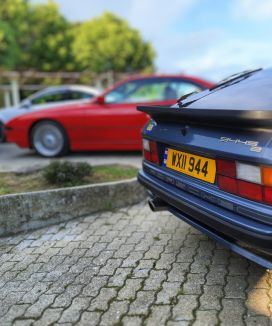
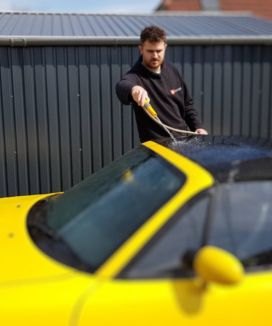
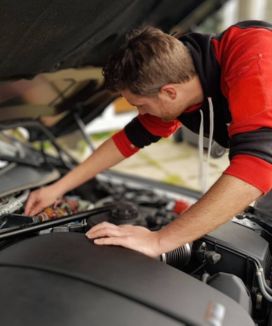

1 thought on “The Complete Used Car Checklist (With Printable PDF)”
This is a great checklist to have when buying a used car. I especially like the printable PDF version.